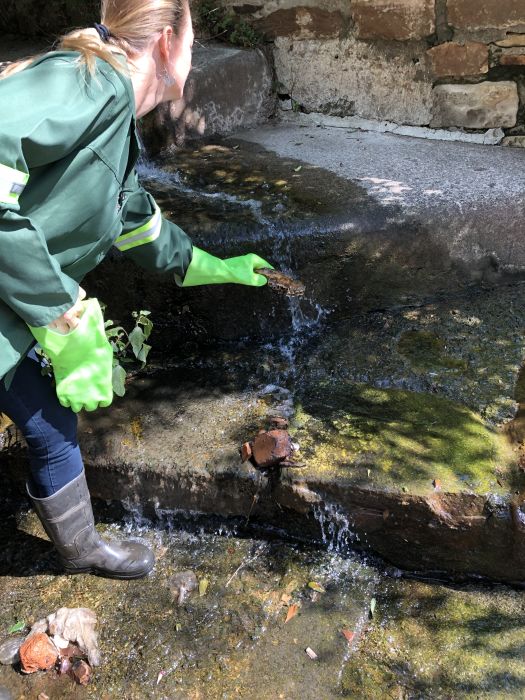







The Jukskei River is one of the largest rivers in Johannesburg, South Africa. The river is a source of drinking water as well as a natural space in which the children of the district bathe and play. Unfortunately, the river holds serious sewage pollution—a high concentration of raw sewage and E. coli—due to aging infrastructure, a backlog of maintenance repairs, and local dumping. Up until now, the river has been dismissed as one beyond care, but two pioneering women have set out to restore cleanliness to part of the river.
Conservationist Romy Stander noted that Johannesburg is also a sub-continental polluter, as the Jukskei carries the city’s pollution north into the Crocodile River, Hartbeespoort Dam, and the Limpopo River. The motivated inhabitants and assisting organizations are convinced that the pollution of their river is not a fatality and that it can, with the investment of the whole community, find its former cleanliness.
Stander and artist Hannelie Coetzee are dedicated to tackling water pollution using research, green infrastructure, and art in a model they hope can be replicated for other rivers across the country. Working closely with the local community, the duo launched an initiative to remove alien, invasive plants in December 2020, with plans underway to build natural water filters to protect the river.
“Water is a reflection of society, and this one is toxic,” said Stander, who co-founded the charity Water for the Future with Coetzee. “We want to create a green corridor filled with safe water and eco-art that communicates with people.”
Water for the Future is based at Victoria Yards, a former laundry factory in inner-city Johannesburg that now houses art studios, community vegetable gardens, a clinic, a creche, and more—all built alongside the Jukskei River.
Together with engineers, researchers, architects, and scientists, Stander and Coetzee are trying to understand what can be done to fix the river permanently. A monitoring station and a water quality sampling device were installed in September 2020 by Campbell Scientific and SRK Consulting to gauge the river’s water quality and discharge. Research has helped Water for the Future understand the impact of illegal sewage connections, collapsed stormwater drains, and high rates of urbanization in the city that have all put pressure on the river.
The data collected from the monitoring station will be used to:
- Educate visitors to Victoria Yards as well as residents
- Estimate extreme event response and urban drainage through student projects at universities
- Contribute to City of Johannesburg projects on the Jukskei River
- Develop an understanding of the mechanisms of flow and water quality fluxes in the Jukskei, aimed at targeting remediation within the catchment and use of Jukskei water in Victoria Yards’ efforts at riverside ecology rejuvenation and enhancement
- Create a discharge and water quality response record, which will be valuable for many urban studies
The following equipment was used to build the monitoring system:
- CR300
- CELL215
- CS475
- HygroVue™5
- TR-525 (from Texas Instruments)
In monitoring the discharge and water quality of the upper Jukskei at Victoria Yards, an integrated water quality sampling device was installed. This allows for flow-rated sampling, which means that single samples are extracted automatically during low flows. Then, with the increase in discharge during rainfall events, samples are automatically taken at a more frequent rate. This results in a concurrent record of flow and water quality, particularly during rainfall event responses.
Examination of these parameters, together with associated stable isotopes of water, allows Water for the Future to deduce the sources and possible pathways of the discharge and water quality species. This is an essential first step for evaluating rehabilitation measures as follows:
- Knowing the water quality concentrations (together with a flow time series) to calculate mass loading, which is often more important than peak concentrations
- Assessing seasonal variations in mass loading with similar discharge rates
- Evaluating the immediate effects of any changes to the stormwater reticulation or implementation of remediation measures
- Gathering meteorological measurements that will allow for the calibration of rainfall-runoff stormwater models
The collected data is intended to be made available to any interested parties and will include contributing to the City of Johannesburg’s monitoring network, research and consulting endeavors, and Water for the Future’s plans for rehabilitation and selected water usage projects.